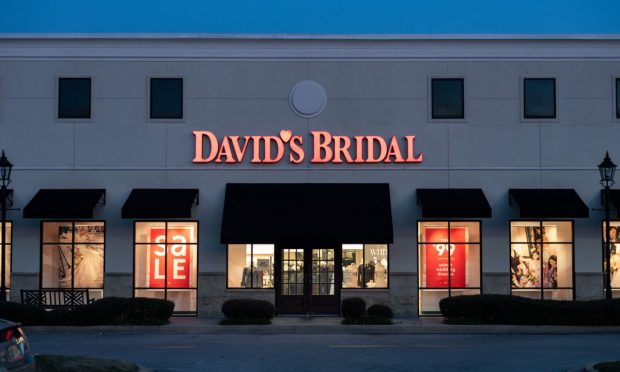Can Loyalty Programs Save Struggling Retailers From Bankruptcy?

In the pandemic era, loyalty programs proved to be an effective strategy to retain customers even while maintaining physical distance.
However, with in-store experiences making a comeback, retailers are looking to capitalize on these loyalty programs by offering exclusive events and perks.
But can loyalty programs save struggling brands?
Earlier this week, PYMNTS reported that specialty retailer David’s Bridal filed for bankruptcy for the second time in under five years.
In a submission to the U.S. Bankruptcy Court in Trenton, N.J., CEO James Marcum said if the company fails to find a buyer, it plans to wind down its operations with the help of liquidation company Gordon Brothers Retail Partners.
Read more: Bankrupt David’s Bridal Seeks Buyer or Will Shut Down
The company attributed its decision to file for bankruptcy to the pandemic’s prolonged impact and changes in consumer habits. The national wedding rate has dropped to its lowest level in 121 years and continues to stay below average. According to Marcum, the company’s research found there were 1.9 million weddings in 2022, compared to the average of 2.2 million per year before the pandemic.
During the pandemic, the specialty retailer launched a loyalty solution around an area of shopping where most would hope to shop only once in their lifetime.
David’s Bridal teamed up with Popwallet, a platform for mobile wallet customer experiences, to provide its customers with unique deals straight to their mobile phones right after signing up.
At the time of the launch, 79% of customers were reported to be more inclined to purchase from and remain loyal to a brand or retailer that offers a loyalty program, per a Bond Loyalty Report. And just seven months after launch, David’s Bridal saw over 500,000 brides sign up for its Diamond Loyalty Program.
“We had faith in the program based on all of our research, but it has exceeded our expectations in just about every single metric we measure from a company perspective,” Chief Marketing and IT Officer Kelly Cook told PYMNTS at the time, also noting that revenue was higher from members than nonmembers while return rates were lower and units per transactions were higher.
See also: David’s Bridal Loyalty Program Tops 500K Amidst Rebound In Weddings
But three years after launching its loyalty program, David’s Bridal has seen a decline in store traffic, according to court documents. The company’s filing also revealed that the growing popularity of nontraditional wedding attire has negatively impacted the gown business, resulting in a 22% decrease in in-store appointments during Q4 2022.
Furthermore, David’s Bridal experienced a decrease in customer confidence after its first bankruptcy, despite having reduced its debt by over $434 million and maintaining a large store presence. Currently, the retailer has 294 stores in the United States, Canada and the United Kingdom.
A Bankruptcy Turnaround
Three years ago, Francesca’s, a boutique clothing chain with over 400 stores, filed for Chapter 11 bankruptcy, but it was later acquired by two private equity firms in 2021 and emerged from bankruptcy shortly after.
Since then, Francesca’s has been rebuilding its business, growing its tween brand Franki and getting into the apparel resale trend.
The retailer also launched a loyalty program, “The Fran Club,” in October 2022. Since then, the program has garnered over 350,000 sign-ups, CMO Jann Parish said in a Modern Retail report.
The loyalty program is structured into three tiers: “Enthusiast,” “Insider” and “Trendsetter,” determined by the number of points a shopper earns within a year. Customers who earn 100 points are given a $10 discount, and new members are granted a 20% discount coupon upon signing up. The program has garnered positive feedback, and according to Parish it has substantially increased the number of returning customers.
As the boutique’s loyalty program reaches its six-month anniversary, the retailer views it as a chance to motivate its members, especially those at the “Trendsetter” tier, to interact with the brand in-store.
Francesca’s recently held its inaugural in-person event in Miami for Fran Club members, store associates, and influencers where attendees had the opportunity to visit a “Bag Bar” and could select a handbag for free, among other giveaways.
The company’s next event is set to take place in June in Houston, in partnership with a local radio station. According to Parish, Francesca’s intends to plan more targeted events throughout the year.
Can Loyalty Programs Fend Off Bankruptcy?
While the two retailers are in different categories, there may be some lessons in Francesca’s for David’s Bridal.
In launching the “Fran Club,” the apparel retailer aimed to create a comprehensive campaign with three crucial components: Francesca’s existing loyalty customers, sales associates and brand ambassadors. Gift cards were given to the brand ambassadors to shop at the stores, and they selected the items they wanted to promote on social media.
“The point of difference is that you can be part of our ad campaigns. You can be part of the brand,” Parish said.
While David’s Bridal has held in-person shopping events and trunk shows, it lacked the personalization that it needed to get its loyalty program to where it needed to be — where members spent more than non-members.
Whether or not the bridal retailer finds a buyer, the company’s fate will depend on its ability to adapt to changing consumer habits and preferences. By focusing on providing exclusive events and perks through its loyalty program, David’s Bridal may be able to rebuild customer confidence and retain its customer base.
For all PYMNTS retail coverage, subscribe to the daily Retail Newsletter.

